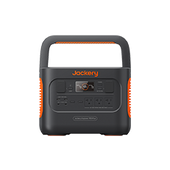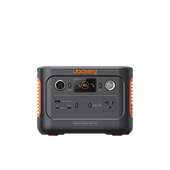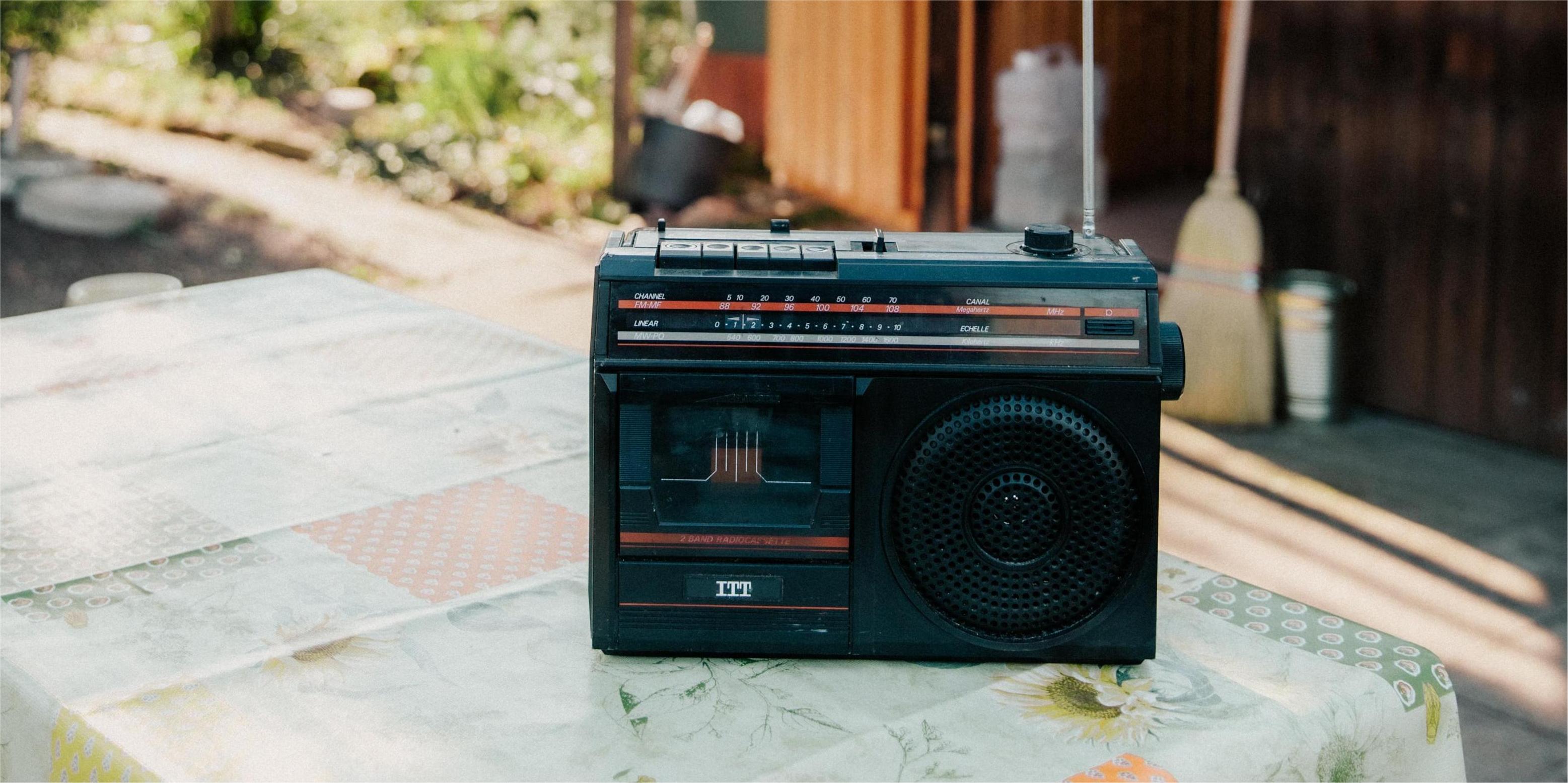Solar-powered radios are a practical and popular solution for people from different walks of life. People going off-grid in camping or van life use it to remain updated about the situation and to get emergency and weather reports. People who do not have constant access to power because of outages etc., also use solar-powered radios for both news and entertainment.
Radio is an invaluable resource in many areas. Batteries can last for a limited time, but solar power radio is the way to go if you are looking for longer, uninterrupted functions.
What Is a Solar Powered Radio
A solar-powered radio is a battery-less radio receiver powered by photovoltaic technology. These PV panels absorb the energy from the sun and convert it into a direct current to power up the radio. The first solar-powered radio was launched in the 1950s by General Electric. This radio used transistors, photovoltaic cells, and a battery. This was a success because it pioneered many great solar devices eventually.
How Does a Solar Powered Radio Work
So, now is the time to discuss "How does a solar-powered radio work?". It is a simple device with very few parts. It has a battery, solar panels, and transistors. There are two ways to capture solar energy i.e. collect the light from the sun or absorb the heat from the sunlight.
The most common option in solar-powered radios is to collect heat from the sun using photovoltaic technology. The PV panels absorb light from the sun and run it through semiconductors. When the photons from the sun reach the semiconductor, they remove electrons from their atoms, thus creating an electrical current. This electrical current is used to run the solar-powered radio. The extra electrical current is also saved in the battery for later use when sunlight is unavailable.
Solar Powered Radio VS. Solar Generator for Radio
There are two options to power up your radio using solar power. You can either use a solar-powered radio or you can use a solar generator for the radio. Solar-powered radio is a small portable device that can be taken anywhere. At the same time, a solar generator for radio is a bigger solution that can power multiple devices simultaneously.
Solar-Powered Radio
A solar-powered radio is like a traditional radio in looks and functions. The only difference is the type of power that the radio uses. A traditional radio uses batteries or socket power. While a solar-powered radio uses PV panels and solar batteries. Solar-powered radio is portable and can be taken anywhere because the sun is available everywhere. This is a favorite and must-have device for all outdoor, camping, and off-grid enthusiasts.
Solar-powered radio is also an important device because it gives equal access to news and information to people in remote areas and fewer income populations. So, this tool promotes the right access to information.
Limitation of Solar Powered Radio
One of the biggest limitations of solar-powered radio is that various features can affect the amount of power a device can produce with solar energy. So, the amount of solar exposure a radio gets will impact its signal receiving and performance.
Another limitation is that if a battery is not installed in the radio, it will not work at night and will not work efficiently on a cloudy day.
Solar Generator for Radio
A solar generator for radio is a bigger solution than a solar-powered radio. This versatile solution uses solar energy to power up multiple devices. It is a green solution that is an environmentally friendly tool that is also noise-free and a low-cost alternative to gas-run machines.

A 1000-watt solar generator can power almost 93% of electrical appliances. Smaller versions can power fewer devices. So, if you acquire one solar generator, you are sorted with power issues of many or all appliances.
Limitations of Solar Generator
There is a high upfront cost because solar generators are less economical than solar-powered radios. Also, they do not work at night without battery backup, and efficiency may be low on cloudy days.
|
Types |
Pros |
Cons |
|
Solar powered radio |
Environment friendly |
This solar-powered system can be used for one device only. So, you cannot use the solar energy stored in the radio for your coffee machine. |
|
No fuel cost |
Does not work at night. |
|
|
Very small portable device. |
With backup, it works on cloudy days or in low-light weather. |
|
|
Low cost of running |
Sole reliance on sunlight |
|
|
Solar Generator for Radio |
Your traditional radio will work with it. |
Initial setup cost. |
| Excellent during emergencies or calamities | ||
|
Solar generators can power up other appliances too. |
||
|
Your radio and solar generator are independent of each other. |
||
|
Environment friendly |
||
|
No noise |
How Many Watts Does A Radio Use
It is important to discuss watts and watts hours before we dive deep into radio power usage.
Watt vs. Watt Hours
- Watts is the amount of power it takes for a device to function
- Watt-hours is the amount of electricity your radio consumes. So, this is how much energy is used in a given amount of time.
How Much Does It Cost to Power A Radio
Average solar-powered radios use around 0.5 to 5 watts of power. Let us take the example of a 5-watt radio. If the 5-watt radio runs continuously for an hour, it consumes 5Wh of energy. If it runs for 2 hours, it will use 10Wh, i.e., 5 watts x 2 hours.
So, if your tariff is $ 0.175 per kWh then the cost of running a 5-watt for 10 hours is;
10 x 5 Wh x 0.001 x 0.175 = $ 0.00875 per day
It will cost you around $0.26 monthly.
How Much Solar Power Does A Radio Need
Different types of radios require different amounts of solar power to run. An alarm clock radio consumes approximately one watt of power. The average battery life for a Digital Audio Broadcasting (DAB) radio is 5 watts.
|
Product |
Watts |
Length of Time |
Daily Power Consumption |
|
Portable Radio |
5 |
4 |
20 Wh |
|
Clock Radio |
2 |
4 |
8 Wh |
Jackery Solar Generator for Radio
A portable solar generator is perfect for camping, off-grid, and van life power requirements. They are also used in areas where power outages are common. This is a better solution than a solar-powered radio or other individual solar-powered devices because a portable generator can power up all your regular devices.
Jackery has a series of solar generators that can power up multiple devices, including radios, camping lights, mini-coolers, refrigerators, TVs, and other big appliances. The Jackery solar generators are known for their efficiency, reliability, and durability. They have fast charging and fluctuation-free power generation for you.

Jackery Solar Generator 600 Plus
The Jackery Solar Generator 600 Plus weighs only 16.1 lbs and can power radios for hours. It can also support various outdoor appliances, including radios, camping lights, coolers, and more. It features a foldable handle to ensure easy carrying of the battery backup to outdoor locations during camping, RV living, glamping, and more.
Jackery Solar Generator 300 Plus
Jackery Solar Generator 300 Plus is a small portable solar generator for small camping trips and for supporting a few devices in power outages. It has a safe and stable battery which can power up your essential appliances and charge your cell phones, laptops, and radios. It features a compact design and a foldable handle that ensures you can carry it in your backpack or move around with the handle.
Jackery Solar Generator 240 v2
The Jackery Solar Generator 240 v2 is a lightweight and easy-to-carry charging solution designed for daily camping needs. Its multiple output ports ensure you can charge various appliances, including radios, lights, smartphones, etc., on the go. It weighs only 7.7 lbs and features an integrated foldable handle to move the generator anywhere you go.
|
Series |
Capacity |
Working Hours |
|
Jackery Solar Generator 600 Plus |
632Wh |
Radio (5W) = 107.4H |
|
Jackery Solar Generator 300 Plus |
288Wh |
Radio (5W) = 48.9H |
|
Jackery Solar Generator 240 v2 |
256Wh |
Radio (5W) = 43.5H |
Solar-Powered Radio FAQs
1. What size of solar generator do I need to power a radio?
It depends on your radio size and whether you want to power other devices simultaneously. If you want to calculate only for the radio, suppose it uses 5 watts. Then, you can take the capacity of the solar generator and calculate the working hours.
So, if the Jackery Solar Generator 240 v2 has a capacity of 256 watt-hours, your radio will run for hours, as below.
Number of supported hours = capacity x 0.85 / radio watts
Why multiply by 0.85? Because in a realistic estimation, we also keep a margin of performance losses and calculate the supported hours based on 85% efficiency.
Hours = 256Wh x 0.85 / 5W = 43.5H
2. How to choose a solar-powered radio?
The most critical features to look for in a solar-powered radio are;
- Working time, i.e., how much running time on a stretch you require without charging.
- Portability depends on how lightweight the radio is and does it have handles, collapsible antennas, and string.
- Waterproofing and durability. You should check the IP rating to determine how protected your radio is from dust and water. IP65 is a good number to look for.
3. How to make a simple solar-powered radio?
You need the following supplies for making a simple solar-powered radio.
- Battery-operated radio.
- Small solar panel.
- Wires with alligator clamps
Follow these steps to make a DIY solar-powered radio.
- Remove the battery panel so that you can connect your solar panels.
- Connect the solar panels in your radio battery compartment. Connect the solar panel wires to the matching terminals inside the radio's battery compartment.
- Put your solar panels in the sunlight. When you have sufficient sunlight, your solar-powered radio must be running.
Final Thoughts
Solar-powered radio is an entertainment device for some and a critical device for some people to access emergency news and warnings. For any off-grid setup or camping adventure when you are screen-detoxifying yourself, a solar-powered radio will help you remain safe and updated. Also, a solar generator is a better option for running your radio and other devices with solar power because it is a more independent and standalone solution. You can check Jackery solar generators for a wide range of options. They have smaller, cost-effective options for small devices and big generators that are costly but offer a high power range.






















































































































Leave a comment